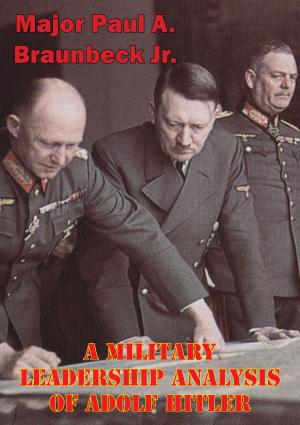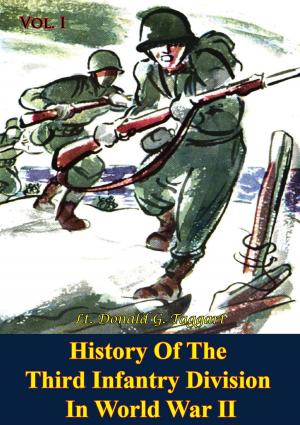The Art Of Wing Leadership And Aircrew Morale In Combat
Nonfiction, History, Germany, European General, Military, United States| Author: | Lt Col John J. Zentner | ISBN: | 9781782898191 |
| Publisher: | Lucknow Books | Publication: | August 15, 2014 |
| Imprint: | Lucknow Books | Language: | English |
| Author: | Lt Col John J. Zentner |
| ISBN: | 9781782898191 |
| Publisher: | Lucknow Books |
| Publication: | August 15, 2014 |
| Imprint: | Lucknow Books |
| Language: | English |
Lt Col John J. Zentner’s The Art of Wing Leadership and Aircrew Morale in Combat addresses the role that the air force wing commander plays in affecting the level of aircrew morale during combat. More specifically, Colonel Zentner’s study seeks to identify and define those unique characteristics associated with leading airmen that sustain aircrew morale in the face of significant losses.
Colonel Zentner defines aircrew morale as the enthusiasm and persistence with which an aviator flies combat missions. He then offers three historical case studies to establish a framework within which aircrew morale can be assessed. The first case study is of Maj Adolf Galland and Jagdgeschwader 26 during the Battle of Britain. The second case study considers Lt Col Joseph Laughlin and the 362d Fighter Group during the invasion of France in the summer of 1944. The third case study examines Col James R. McCarthy and the 43d Strategic Wing during Operation Linebacker II. Drawing heavily on the results of questionnaires and personal interviews, each case study is focused on the importance that aircrews ascribed to three general areas: individual needs, group cohesion, and unit esprit de corps.
Colonel Zentner concludes that aircrew control over development of combat tactics was the single most important element affecting morale. This finding supports one of the fundamental truths about the employment of airpower, centralized control and decentralized execution that has become embedded in the airman’s culture. In each of the three cases studied by the author, morale generally improved when the wing commander either displayed a personal flair for tactical innovation or allowed his subordinates to become innovative. Conversely, morale declined when higher headquarters placed burdensome and unsound restrictions on aircrew tactics.
Lt Col John J. Zentner’s The Art of Wing Leadership and Aircrew Morale in Combat addresses the role that the air force wing commander plays in affecting the level of aircrew morale during combat. More specifically, Colonel Zentner’s study seeks to identify and define those unique characteristics associated with leading airmen that sustain aircrew morale in the face of significant losses.
Colonel Zentner defines aircrew morale as the enthusiasm and persistence with which an aviator flies combat missions. He then offers three historical case studies to establish a framework within which aircrew morale can be assessed. The first case study is of Maj Adolf Galland and Jagdgeschwader 26 during the Battle of Britain. The second case study considers Lt Col Joseph Laughlin and the 362d Fighter Group during the invasion of France in the summer of 1944. The third case study examines Col James R. McCarthy and the 43d Strategic Wing during Operation Linebacker II. Drawing heavily on the results of questionnaires and personal interviews, each case study is focused on the importance that aircrews ascribed to three general areas: individual needs, group cohesion, and unit esprit de corps.
Colonel Zentner concludes that aircrew control over development of combat tactics was the single most important element affecting morale. This finding supports one of the fundamental truths about the employment of airpower, centralized control and decentralized execution that has become embedded in the airman’s culture. In each of the three cases studied by the author, morale generally improved when the wing commander either displayed a personal flair for tactical innovation or allowed his subordinates to become innovative. Conversely, morale declined when higher headquarters placed burdensome and unsound restrictions on aircrew tactics.







![Cover of the book A Surgeon In Khaki [Illustrated Edition] by Lt Col John J. Zentner](https://www.kuoky.com/images/2014/august/300x300/9781782892700-YwlT_300x.jpg)



![Cover of the book St Lô (7 July - 19 July, 1944) [Illustrated Edition] by Lt Col John J. Zentner](https://www.kuoky.com/images/2014/june/300x300/9781782892502-d54q_300x.jpg)



